Museums & Institutions
Collector Abhishek Poddar’s New Museum in India’s ‘Silicon Valley’ Takes a Digital Approach to Traditional Exhibitions
Bangalore's glittering new Museum of Art & Photography opens to the public this week.
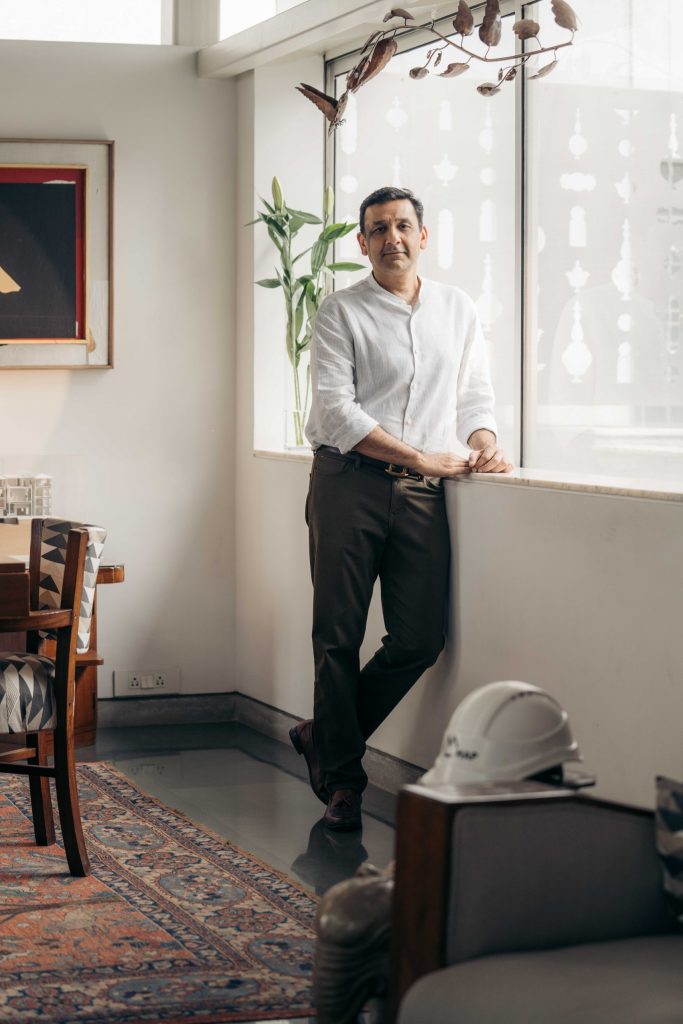
Bangalore's glittering new Museum of Art & Photography opens to the public this week.

Cleo Roberts-Komireddi

India’s newest and perhaps most ambitious institution, the Museum of Art and Photography (MAP), is set to open in Bengaluru (Bangalore) on February 18 after much anticipation and a few delays. Known as India’s Silicon Valley, the city is home to many artists, yet it has been on the fringes of the country’s art and cultural offerings, which tend to cluster in New Delhi and Mumbai.
Founded by businessman Abhishek Poddar, and dedicated to widening accessibility to South Asian art, MAP has been a stop-start journey from concept to actualization, largely due to construction delays.
The task of developing a world-leading museum in an area with scant government support for culture, in addition to a relatively desolate museum landscape in relation to the region’s rich artistic heritage, was always going to be tricky. “I had one person who told me when I was embarking on this project, ‘Abhishek, you are making the biggest mistake of your life,’” said Poddar in a telephone interview.
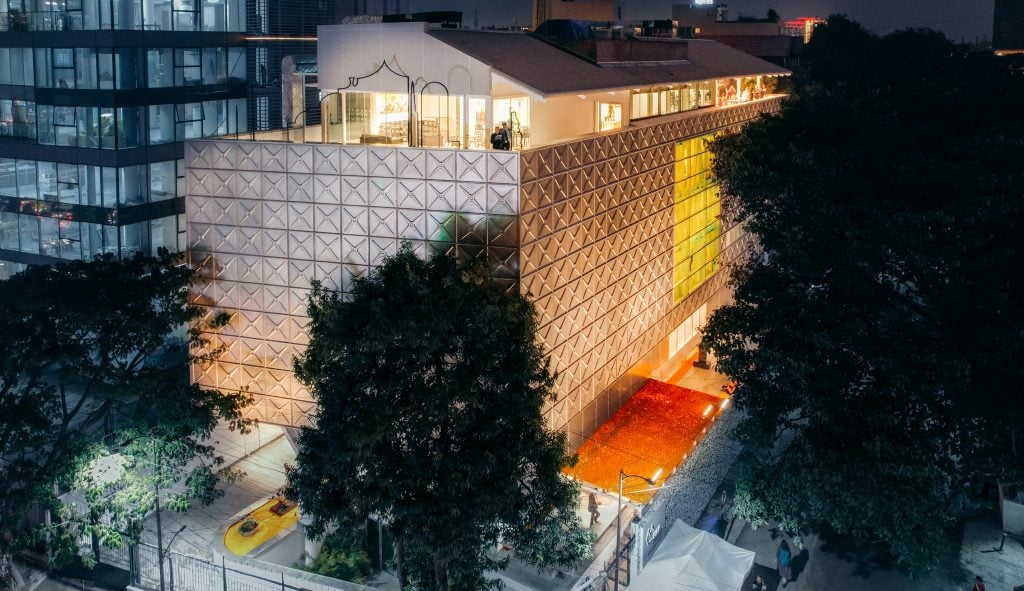
Exterior view of MAP Museum of Art & Photography, Bangalore. Photography © Orange & Teal
A seasoned collector with diverse tastes spanning film posters, modern Indian art, and antiquities, Bengaluru-based Poddar became immersed in India’s art world during his teenage years when he began meeting artists and buying their work. “[The artists] saw in me a willing candidate who was eager to learn so they would take me to other artists, they would sharpen my eye and spend time talking about nuanced things.”
By 2006, Poddar had started Tasveer Art Gallery, focusing on promoting contemporary Indian photography, while working for his family’s tea plantation and trading business, Matheson Bosanquet.
The project originally began as a state government scheme to develop the city’s museums through private-public partnerships. In 2015, Poddar was set to be given the keys to Venkatappa Art Gallery, a 1960s modern and contemporary museum founded on the collections of Karnataka’s famed artist K.Venkatappa, as well as a carte blanche to modernize it on his own dime. “After spending a few months together, we [the government and Poddar] discovered that we think very differently;” he said of the relationship with the authorities. “There was public outcry. Many felt that these properties were going to be taken over by us coming in the garb of philanthropy.”
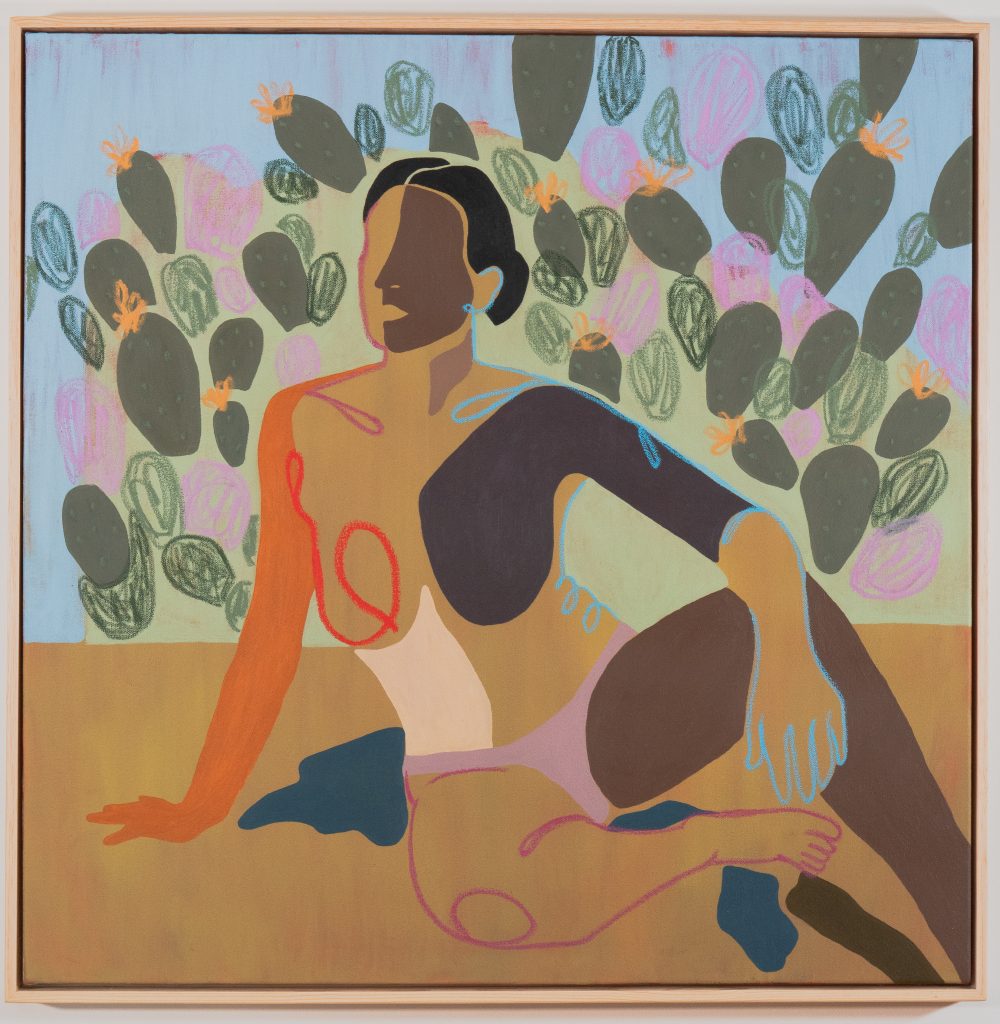
Wild Refuge Anoushka Mirchandani (2021). Donated by Rahul Sabhnani (Private Collection).
The upshot of the partnership’s deterioration was that Poddar purchased a plot of land opposite it and, in 2016, MAP began to take shape in earnest. The project’s budget burgeoned to six times its original cost. India’s art world is buoyed by philanthropists but, unlike Kiran Nadar Museum of Art, India’s first philanthropic private museum, Poddar started by developing a collaborative funding model, recruiting trustees and an advisory board.
In a region with vast social and economic inequalities, philanthropy tends to prioritize health care and sanitation projects. Cognizant of these “bigger problems,” Poddar created a U.S. foundation and intensified his fundraising both there as well as in India, relentlessly pitching to hundreds, if not thousands of investors. “I stopped counting after I reached 1,500,” he admitted. Although securing core support from industrialist Sunil Munjal, Tata Trusts, and Infosys Foundation, among others, Poddar confessed, “we still haven’t raised the entire endowment we are looking for.” This amount is not in the public domain and was not supplied despite request.
The building, designed by the city’s renowned architects, Mathew & Ghosh, broke ground in May 2018. Its blueprint included four large galleries, a café, rooftop restaurant, auditorium, library, and conservation laboratory all wrapped up in a 44,000 square foot stainless steel clad cuboid evocative of the city’s colonial water tanks. With the construction timeline derailed by the Covid-19 pandemic, MAP again had to pivot. “I think we’ve made an art out of how to handle a crisis,” Poddar laughed. The collection, seeded by the Poddar family and augmented by donations, was showcased online and a comprehensive digital program of exhibitions developed.
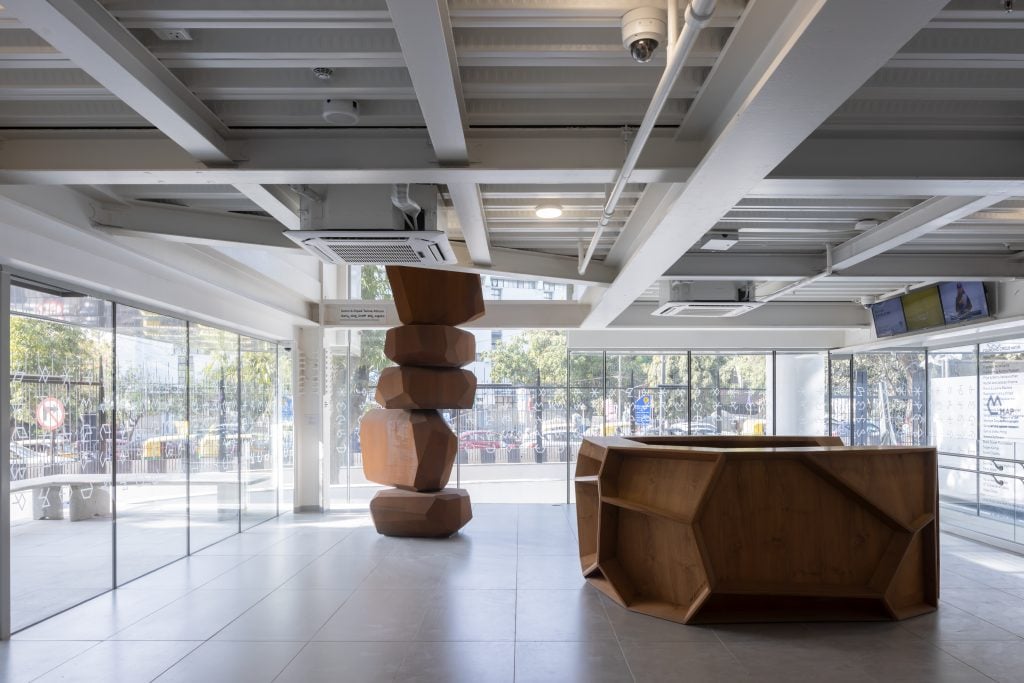
Museum of Art & Photography (MAP), Bangalore. Opening 18 February 2023. Ground floor reception featuring sculptural commission RockFormationTower and welcome desk. Photo © Iwan Baan
“At MAP we ended up turning things on their head,” said director Kamini Sawhney. “Most people have a physical space and then start building on that. We did the opposite and, because of the reach that the digital platform gave us, it allowed us to bring people and conversations that we could never have had.”
The “Museums without Borders” video series is an example of how MAP has brought its collection into dialogue with institutions and their related holdings across the world. In one episode, curator Susan Stronge from the Victoria and Albert Museum, discusses their colonial trophy, Tipu’s Tiger, and Sawhney responds by showing a textile souvenir with strikingly similar iconography.
Including contributions from Amsterdam’s Rijksmuseum, the National Gallery Singapore, and more, the series addresses global connections and conflicts and demystifies cultural objects. This is enhanced by the initiative MAP Academy, a hub of free online courses and a mammoth encyclopaedia of South Asian art. (Disclosure: the article’s author is on the advisory board of MAP Academy).
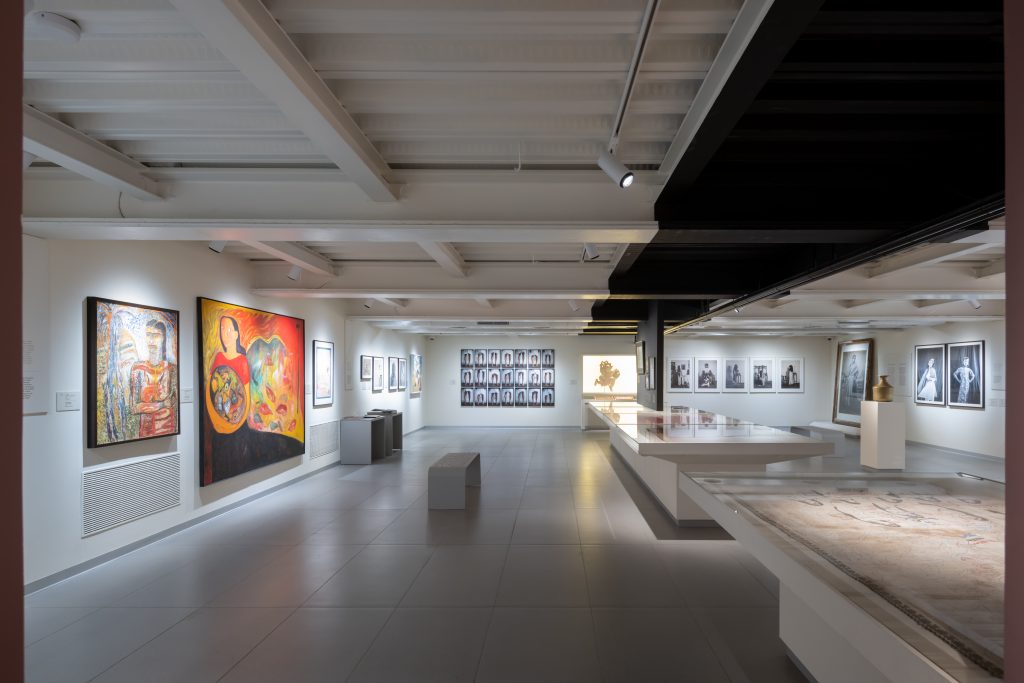
Museum of Art & Photography (MAP), Bangalore. View of “Visible/Invisible representation of Women in Art through the MAP Collection.” Photo © Iwan Baan
With an enviable and comprehensive collection of over 60,000 works, ranging from historic sculpture to photography and incorporating popular culture, Indigenous art and textiles, showcasing the immense diversity of South Asia’s arts, it takes a broad view of what constitutes art, challenging categorical hierarchies often formed and engrained during the region’s colonial period.
Highlights include a Rajput miniature by Salig Ram, the archives of TS Satyan, the so-called father of Indian photojournalism, as well as numerous works by Gond legend Jangarh Singh Shyam and painter Arpita Singh.
Tied to this ideal of opening up collections for all, but also in reflection on Bengaluru’s tech city status, the museum has embraced digital media. The Sasken Multimedia Centre houses a holographic and interactive archive connected to its digitized collection; currently, Modernist legend M.F Husain has been resurrected as an A.I. avatar able to engage in conversation.
“We see the physical and digital as two sides of the same coin,” said Poddar. As such, the museum will be inaugurated with hybrid programming: on site there will be three major exhibitions—by artists Jyoti Bhatt, L N Tallur, and a group show called “Visible/Invisible”—interspersed with a range of sculptural commissions, talks, and performances with online iterations.
Beyond that, Poddar is keeping things open. “I’d be lying if I said I know what our strategy is for the next five or ten years because I didn’t know where I was going at any step of the way. I just had this [idea] that I had to do a museum,” he said. “We are learning everyday.”
Museum of Art & Photography (MAP) opens to the public on February 18.
More Trending Stories:
Rising Photographer Dannielle Bowman Wants to Make Images That Function Like Memories
See Inside Actor Jim Carrey’s Art-Filled Home, Now on the Market for $29 Million (Art Not Included)